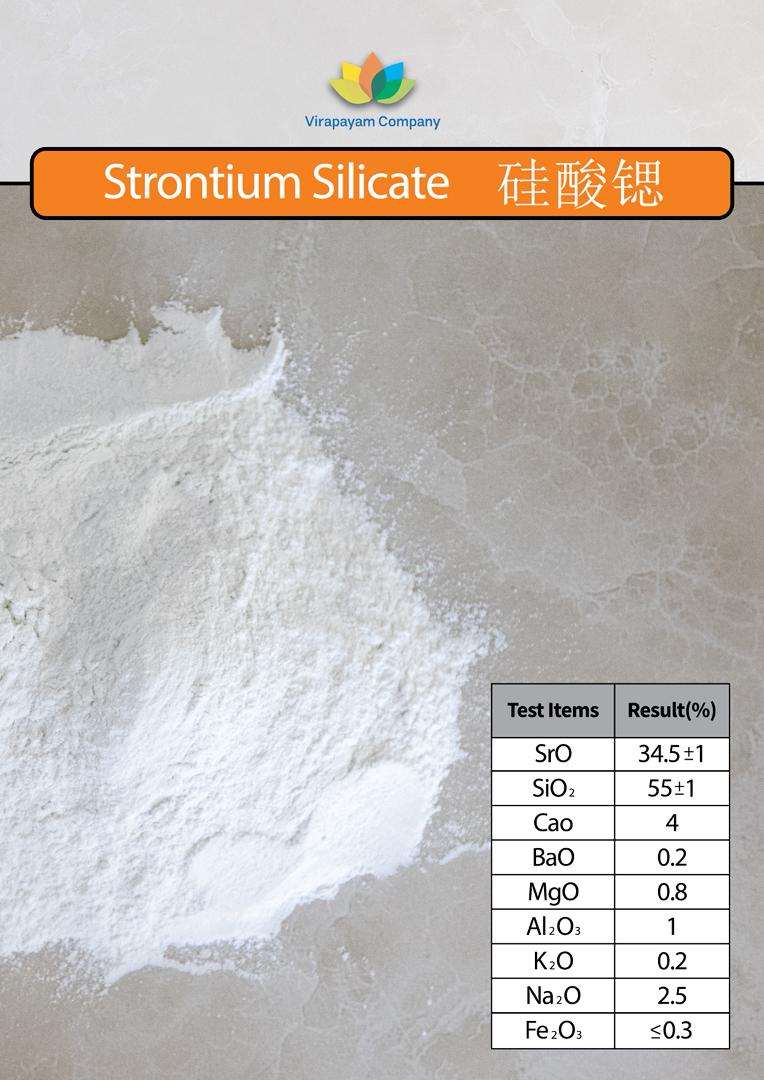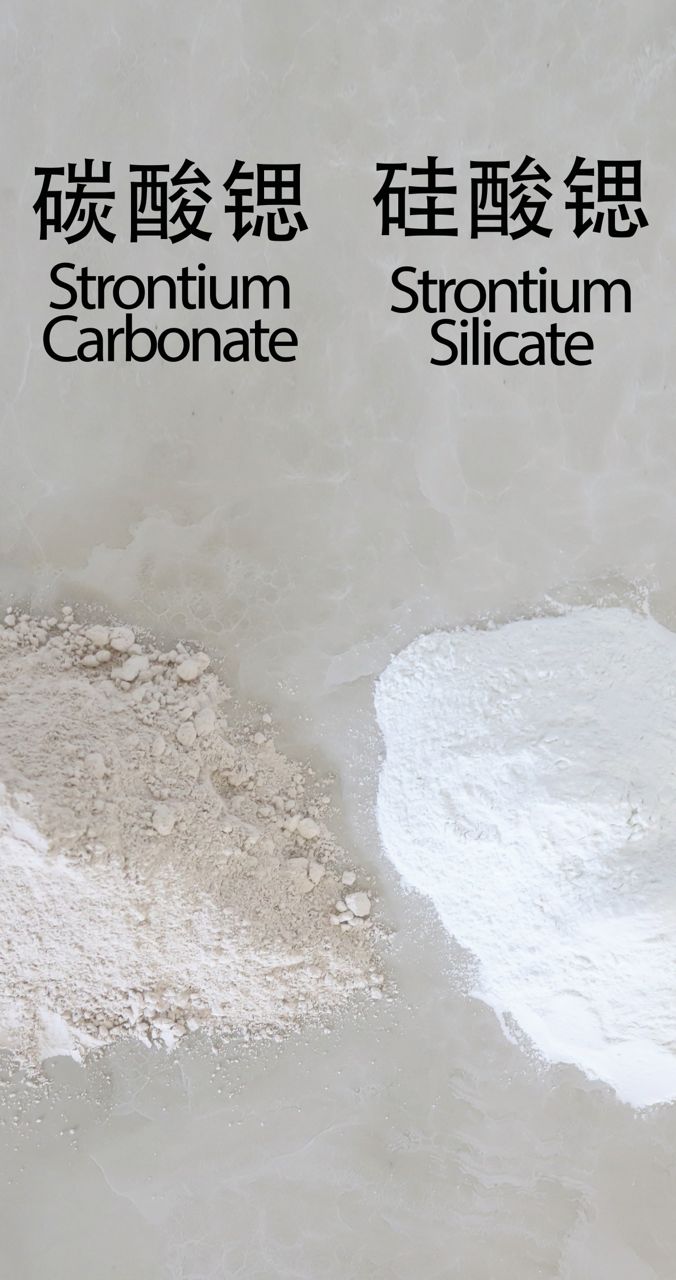
Strontium Silicate: A Brilliant Bond of Silica and Strontium!✨
Strontium Silicate is a rare and valuable mineral compound that offers a remarkable blend of geological elements and visual aesthetics. Due to its unique thermal, structural, and optical characteristics, it has garnered significant attention in materials science, advanced ceramics, and even emerging technologies. Although it is less commonly seen as eye-catching crystals like Celestine, its industrial and geological importance is no less significant.
📌 Basic Identification
- Name: Strontium Silicate
- Chemical Formula: SrSiO₃
- Mineral Group: Silicates
- Crystal System: Orthorhombic (most commonly)
- Mohs Hardness: 5 – 6
- Specific Gravity (Density): ~3.4–3.6 g/cm³
- Luster: Vitreous to dull
- Transparency: Translucent to opaque
- Streak: White
- Cleavage: Poor to indistinct
- Fracture: Uneven to conchoidal
- Color: Typically white, grey, pale green, or beige
🌍 Geological Formation and Origin
Strontium Silicate often forms in metamorphic and volcanic environments, particularly where strontium-rich magmas interact with siliceous rocks. It is classified among rare silicates and may occur alongside minerals such as:
- Wollastonite (CaSiO₃)
- Apatite (Ca₅(PO₄)₃(F,Cl,OH))
- Calcite (CaCO₃)
- Feldspar group minerals
- Celestine (SrSO₄)
Modes of Formation:
- Contact Metamorphism: Heat-induced reactions between magma and carbonate/siliceous rocks form Strontium Silicate.
- Hydrothermal Activity: In certain conditions, hot strontium-bearing fluids reacting with siliceous rocks result in its deposition.
- Volcanic Processes: Some alkaline igneous rocks may also be sources of this compound.
🌎 Global Occurrence and Deposits
Although less common than Celestine, significant deposits of Strontium Silicate have been reported in:
- Japan: Especially in the volcanic regions of Honshu
- Russia: In siliceous metamorphic rocks
- USA: In states such as Utah and California
- Germany: In Alpine and metamorphic areas
- China and Iran: Potential presence (further exploration needed)
💎 Common Occurrences:
- Fine-grained masses
- Poorly developed prismatic crystals
- Tiny inclusions within siliceous matrices
- By-products of metamorphic processes
🔬 Mineralogical and Physical Characteristics
- Crystal Habit
Typically occurs as small prismatic or fibrous crystals; in some metamorphic conditions, it appears as granular or massive forms. - Color and Clarity
Usually white, light grey, or greyish-green. In pure form, it lacks vibrant colors, but iron or manganese impurities can cause variation. - Transparency
Semi-transparent to opaque, with slight light transmission possible in thin sections. - Optical Properties
- Refractive Index: ~1.63 – 1.67
- Birefringence: Low
These features make it suitable for certain heat-resistant lenses and industrial ceramics.
🧪 Chemical Properties and Stability
- Main Components: Strontium (Sr) and Silica (SiO₂)
- Chemically relatively stable, though more reactive at high temperatures
- Not resistant to strong acids (e.g., HCl) and may decompose
- In alkaline environments, SrSiO₃ tends to undergo compositional changes
🧭 Environmental and Geological Significance
- Geochemical Indicator: Its presence can indicate thermal interactions between magma and siliceous rocks.
- Industrial Raw Material: Used in the production of specific ceramics, specialty glass, and catalysts.
- Research Utility: Important in studying strontium ion behavior in isotopic geology.
🛑 Handling and Preservation
While harder than Celestine, Strontium Silicate still requires care:
- Avoid impacts and contact with acids
- Store in a dry environment
- If kept as a collection specimen, use shock-resistant packaging
✨ Strontium Silicate in Culture and Technology (Optional)
In certain metaphysical and technological applications:
- Symbolizes the connection between Earth and Fire in Eastern philosophies
- Explored in the development of photonic materials and high-temperature-resistant ceramics
- Occasionally studied for use in military-grade heat-resistant coatings
✅ Summary
Strontium Silicate is a rare but significant mineral, positioned at the intersection of materials science, geology, and modern technology. Geologically, it signals unique metamorphic or volcanic environments. Industrially, its applications are expanding in advanced ceramics, specialty glass, and geochemical research. Despite its modest appearance, Strontium Silicate carries a profound story of Earth’s internal processes.
"Strontium Silicate Mineral – SGS Certified Test Outcome"

